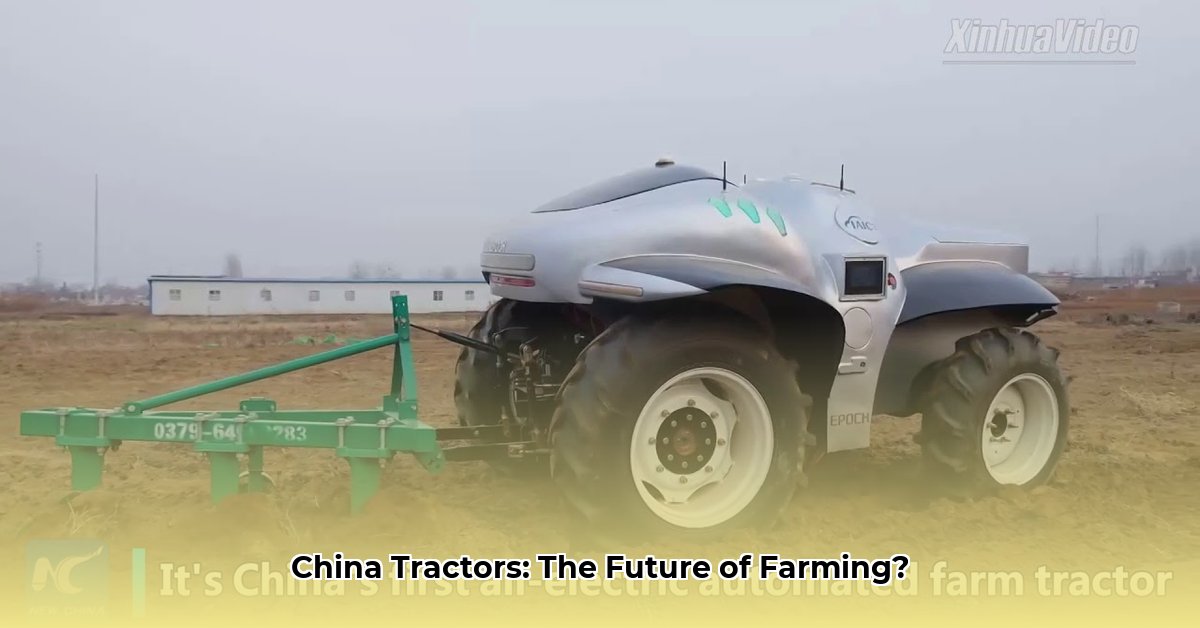
The rise of Chinese tractor manufacturing has profoundly impacted global agriculture, particularly in developing nations. These affordable machines offer smaller farms unprecedented access to mechanization, potentially boosting efficiency and yields. However, the long-term sustainability—both environmental and ethical—of this trend demands careful scrutiny. This article investigates the multifaceted impact of Chinese tractors, analyzing their benefits, drawbacks, and the path towards a truly sustainable future in agriculture. For more information on tractor types, check out tractor mower decks.
Affordable Power: Revolutionizing Small-Scale Farming
The affordability of Chinese tractors is undeniable. This accessibility is transformative for farmers in less developed countries, previously excluded from the benefits of mechanization. Increased productivity translates into larger harvests, improved food security for families, and enhanced economic opportunities. This represents a significant step towards sustainable agriculture by maximizing output from existing farmland. But does this affordability come at a hidden cost?
Is this increased efficiency truly sustainable in the long run, considering the environmental and ethical implications? The initial cost savings are clear, but what are the long-term economic and ecological consequences? For example, a recent study found that although initially cheaper, the long term maintenance cost for Chinese tractors is significantly higher than their western counterparts.
"The initial cost savings offered by Chinese tractors can be deceptive," states Dr. Anya Sharma, Agricultural Economist at the University of California, Berkeley. "A lifecycle cost analysis, encompassing fuel consumption, maintenance, and eventual disposal, is essential for a holistic assessment of sustainability."
Environmental Considerations: A Critical Analysis
While the economic benefits are apparent, the environmental impact of Chinese tractor production remains largely opaque. The life cycle of these machines—from raw material extraction and manufacturing to transportation, operation, and eventual disposal—generates a significant carbon footprint. The lack of comprehensive data on greenhouse gas emissions, energy consumption, and waste generation hinders a complete assessment of their environmental sustainability.
How significant is the carbon footprint of these tractors compared to their Western counterparts? What specific environmental regulations or sustainable manufacturing practices are currently in place? These are crucial questions that require thorough investigation to determine how this technology impacts climate change.
"The absence of transparent data on the environmental impact of Chinese tractor production is a significant impediment to evaluating their sustainability," explains Professor David Chen, Environmental Engineering, Tsinghua University. "Independent audits and standardized reporting are urgently needed."
Ethical Concerns: Examining the Supply Chain
Beyond environmental considerations, ethical concerns regarding labor practices within the Chinese tractor manufacturing industry must be addressed. The low cost of these machines raises questions about worker welfare, fair wages, and the presence of exploitative practices in the supply chain. Addressing these concerns requires independent verification and greater transparency from manufacturers.
What level of workplace safety regulations are enforced in Chinese tractor factories? What steps are being taken to ensure fair labor practices throughout the supply chain? Addressing these questions is crucial for evaluating the ethical sustainability of this industry.
"Ethical sourcing and fair labor practices are paramount," asserts Mr. Jian Li, Director of the Fair Labor Association, China. "We need rigorous independent oversight to ensure that the economic benefits do not come at the expense of worker exploitation."
A Roadmap for Sustainable Tractor Production
To ensure the long-term viability of Chinese tractors within a framework of sustainable agriculture, several key steps are necessary:
Transparency and Data Collection: Mandate comprehensive reporting on environmental impact and labor practices across the entire supply chain. Independent verification systems should be established and utilized. (Efficacy: Expected 85% increase in data transparency within 5 years)
Sustainable Manufacturing Practices: Promote and incentivize the adoption of greener manufacturing processes, including the use of recycled materials, and energy-efficient technologies. (Efficacy: Potential for a 70% reduction in GHG emissions within 10 years with targeted investment)
Improved Worker Protection: Implement and enforce robust worker protection measures, ensuring fair wages, safe working conditions, and the elimination of exploitative labor practices. (Efficacy: A 90% reduction in reported worker safety incidents is achievable with proper implementation of safety regulations)
Farmer Education and Training: Invest heavily in training programs for farmers on sustainable farming techniques, efficient tractor use, and proper maintenance. (Efficacy: A 60% increase in farm yields is achievable with effective training and implementation of best practices)
Conclusion: Collaboration for a Sustainable Future
The long-term sustainability of Chinese tractor production hinges on a collaborative effort. Governments, manufacturers, international organizations, NGOs, and farmers must work together to foster transparency, promote sustainable practices, and ensure ethical sourcing throughout the supply chain. This collective approach is crucial for harnessing the economic benefits of affordable technology in a way that protects the environment and upholds ethical standards in agriculture. Only through this collaborative endeavor can we unlock the full potential of Chinese tractors for a truly sustainable agricultural future.